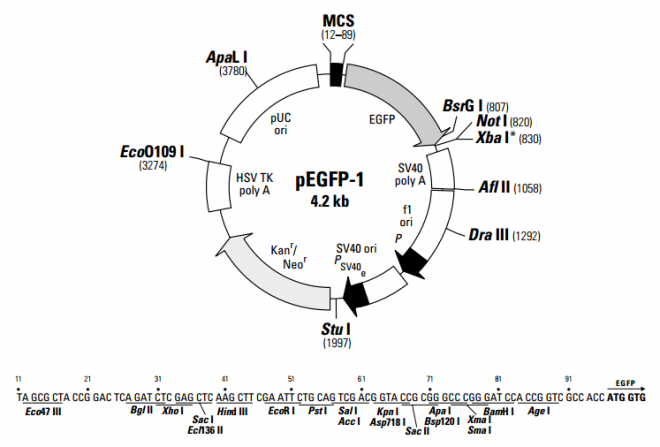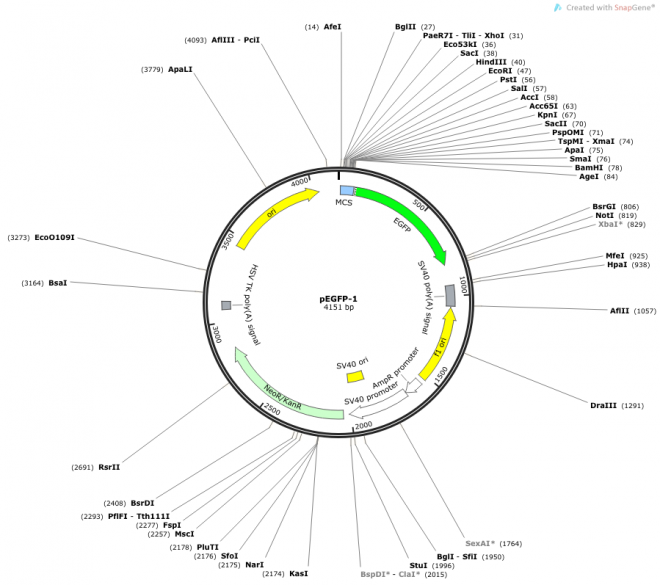
|
品牌 |
酶研生物 | |||||||||||||||
货号 |
MY1106 | |||||||||||||||
规格 |
2ug | |||||||||||||||
价格 |
询价 | |||||||||||||||
货期 |
现货 | |||||||||||||||
pEGFP-1 encodes a red-shifted variant of wild-type green fluorescent protein GFP (1¿3) which has been optimized for brighter fluorescence and higher expression in mammalian cells. (Excitation maximum = 488 nm; emission maximum = 507 nm.) pEGFP-1 encodes the GFPmut1 variant (4) which contains the double-amino-acid substitution of Phe-64 to Leu and Ser-65 to Thr. The coding sequence of the EGFP gene contains more than 190 silent base changes which correspond to human codon-usage preferences (5). Sequences flanking EGFP have been converted to a Kozak consensus translation initiation site (6) to further increase the translation efficiency in eukaryotic cells. pEGFP-1 is a promoterless EGFP vector which can be used to monitor transcription from different promoters and promoter/enhancer combinations inserted into the MCS located upstream of the EGFP coding sequence. SV40 polyadenylation signals downstream of the EGFP gene direct proper processing of the 3' end of the EGFP mRNA. The vector backbone also contains an SV40 origin for replication in mammalian cells expressing the SV40 T antigen. A neomycin-resistance cassette (Neor) allows stably transfected eukaryotic cells to be selected using G418. The Neor cassette consists of the SV40 early promoter, the neomycin/kanamycin resistance gene of Tn5, and polyadenylation signals from the Herpes simplex virus thymidine kinase (HSV TK) gene. A bacterial promoter upstream of this cassette confers kanamycin resistance in E. coli. The pEGFP-1 backbone also provides a pUC origin of replication for propagation in E. coli and an f1 origin for single-stranded DNA production. 载体应用Fusions to the C terminus of EGFP retain the fluorescent properties of the native protein allowing the localization of the fusion protein in vivo. The target gene should be cloned into pEGFP-C1 so that it is in frame with the EGFP coding sequences, with no intervening in-frame stop codons. The recombinant EGFP vector can be transfected into mammalian cells using any standard transfection method. If required, stable transformants can be selected using G418 (7). pEGFP-C1 can also be used simply to express EGFP in a cell line of interest (e.g., as a transfection marker).
|
|
|||||||||||||||











